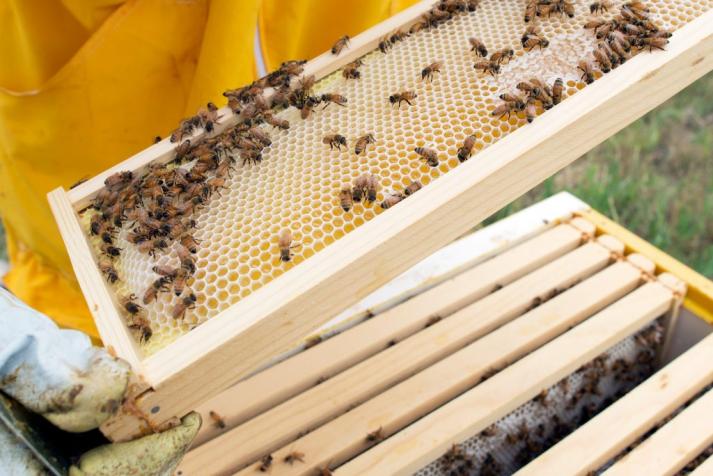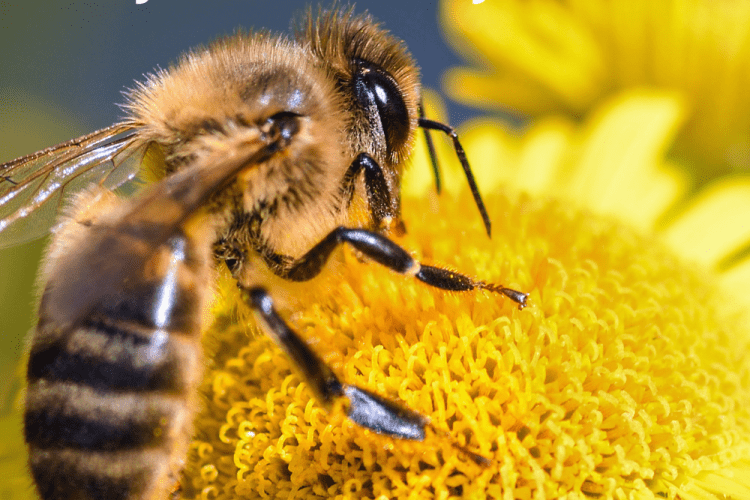More and more people are interested in keeping bees in their backyard, vegetable garden, or homesteader, whether it’s just for their own consumption or if they want to sell the honey…keeping bees is a skill that can be easily learned.
Before you start it’s important to consider whether keeping bees is right for you. Before you start… it’s important to read and delve as deeply as you can to learn everything about bees. This allows you to start your beekeeping the right way.

It’s important to understand what bees do. In nature, the bees make nests in sheltered hedges, hollow tree trunks, or other sheltered places. But when we keep bees in hives this becomes their man-made nests. Bees fly to flowers and trees and extract the nectar from these plants and shrubs and they fly back to the hive where they extract the nectar into the combs that are within the hives, this then becomes honey and for beekeepers, this is the easiest way to control the bee colony and to extract the honey.
The best time to start with bees is in spring, as the allows the bee colony to increase numbers and to build up baby bees, but also it gives the bees time to build up honey before the winter time starts.
For beekeeping you will need various supplies before the bees can be brought into the hive.
- You will need a beehive, the most common type of beehive is the one known as Langstroth hive which is made up of boxes and frames, you can buy a hive kit or you can buy individual items such as boxes and frames. Alternatively and becoming very popular is the Warre Garden Hive which you can make yourself.
- Then you need to buy the bees, it’s often preferred to buy your bees locally, as they are then already used to your local area. Alternatively, you can buy a colony online plus a queen, or you can buy a nuc colony – a nuc colony is already established set of bees with a queen who has already started laying brood. Once you receive them you place the colony on top or beside your beehive to allow the bees to get orientated to your local area.
- Protective clothing, even though you are likely to get stung by a bee, it’s important to have the correct protective clothing. Beesuit is either in one-piece or jacket and pants. A bee suit is there to protect your whole body from bee stings. If you can only buy one item then the buy the jacket instead of the pants. Veil; which protects your head and face from bee stings. Gloves are great especially when you are a beginner, though many people use dishwashing gloves. You will also need a smoker as this item helps keep the bees calm before you check on them or when you harvest the honey from the hive.
- Some other hand tools that are very useful when beekeeping are: A hive tool which is like a small crowbar tool and this can help you prise the boxes apart that make up your beehive, as these are often stuck together by the bees with beeswax and/or propolis. A scraper is a good tool to help you remove the build-up of wax and/or propolis on your hive. An uncapping scratcher this tool will help you uncap your honeycomb to release honey.
- Honey extractors is needed as this extracts the honey from your honey frames. There are many different sizes and types, but they all work in a similar way, some are hand-crank and others are run by a motor. In the beginning, it maybe more cost-effective to rent or borrow one from somewhere.
It’s very useful to join a local beekeeping group in your area. Often the people in these groups are very willing to help you out and this can be very useful. They may help you find your queen or help you out when there is a problem.

Remember: before buying everything…start small, this way it allows you to make adjustments. Some supplies can be bought online and others are better bought in person as you can quickly see if it’s right for you.
Hopefully this article has helped you gain more knowledge in beekeeping.









